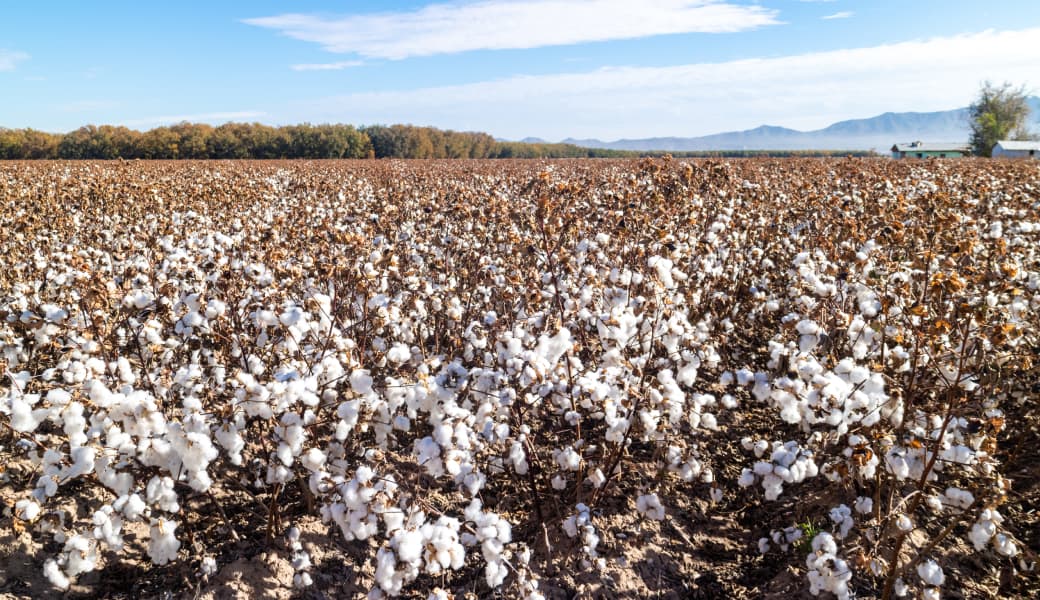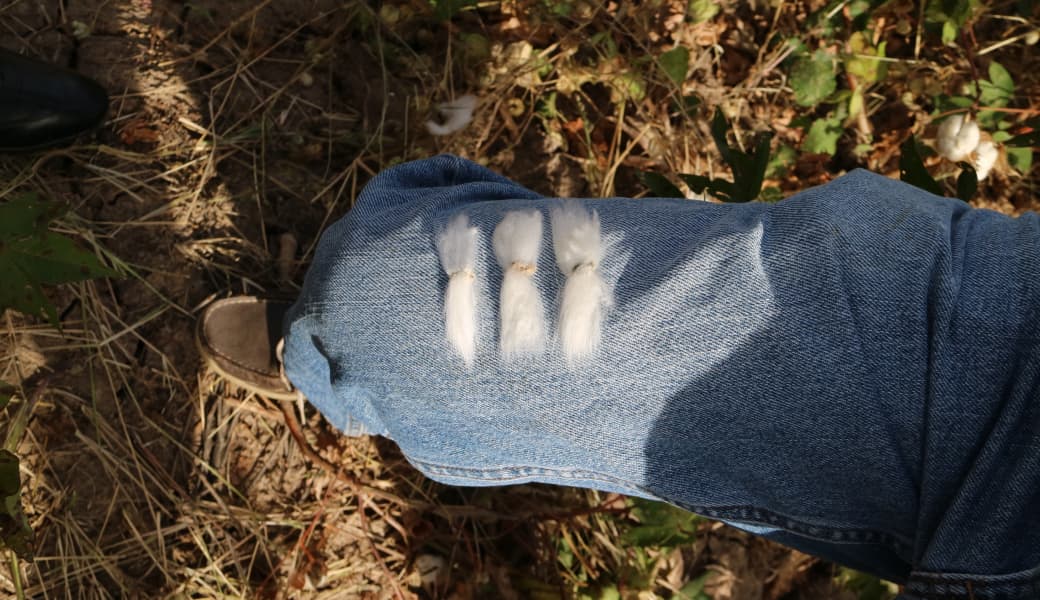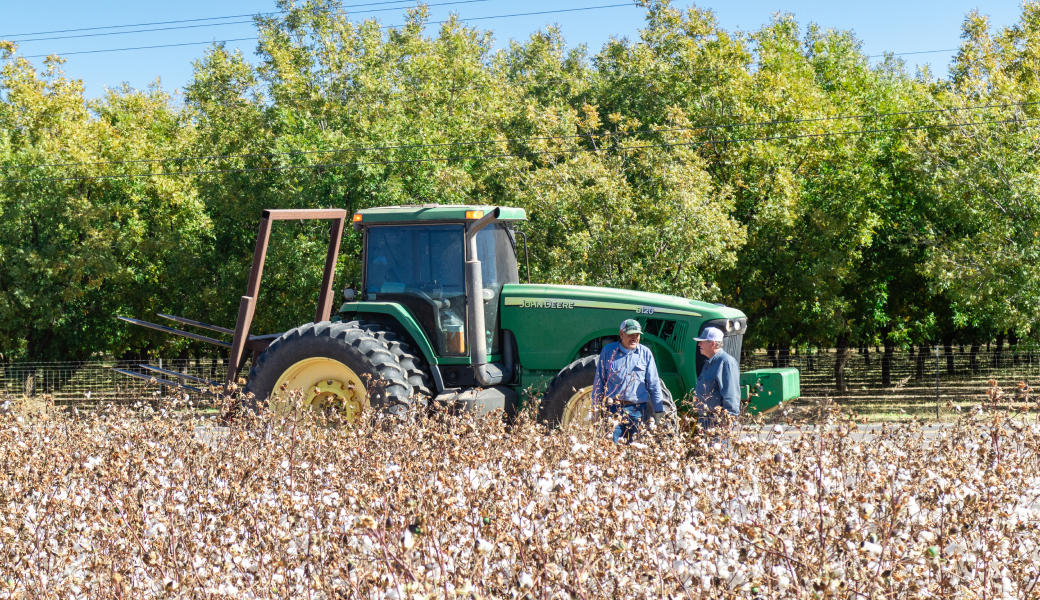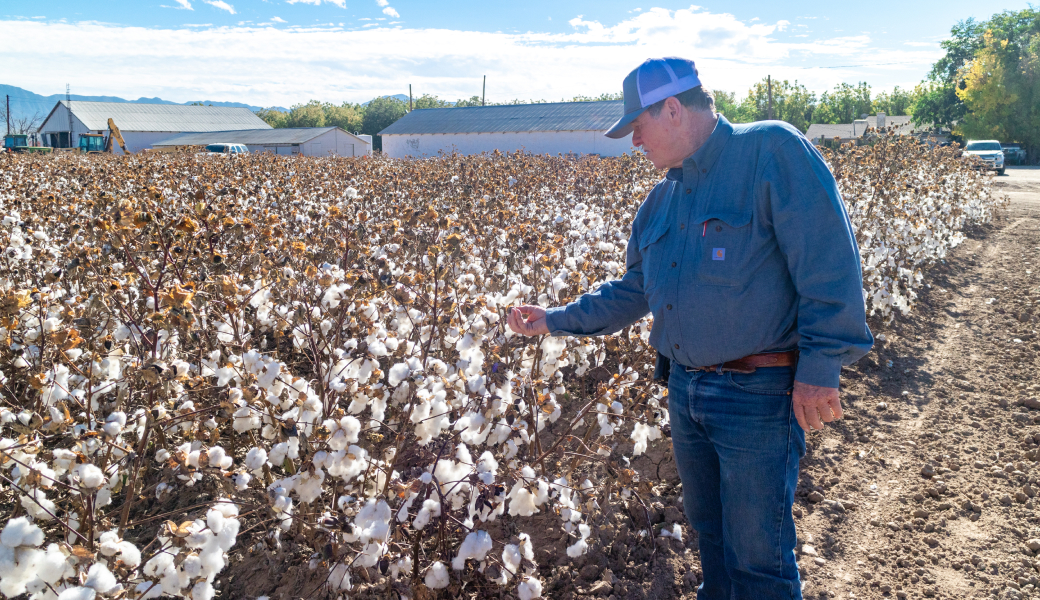American
Sea Island Cotton
Miracle Cotton
The name "Sea Island cotton," now synonymous with the finest cotton in the world, has its roots in the late 18th century when a Caribbean Barbadense variety was cultivated in the Sea Islands region of the U.S. East Coast. However, in the early 20th century, commercial cultivation declined due to the damaging impact of insect pests, resulting in the mainstream variety of cotton in the United States shifting to another variety.
It was not until the seed development program at New Mexico State University, which commenced in the 1980s, that commercial cultivation efforts were initiated once again.
The revival is currently limited to a small area in the southwestern United States. The high altitude, desert climate, and sun-drenched soil are conducive to cultivation, while the cool nights provide a period of rest and protection from pests.
Once the leaves begin to fall in response to the onset of frost, the crop is ready for harvest. The commercial cultivation of Sea Island cotton, previously believed to be unfeasible outside of the Caribbean islands, has now been successfully reintroduced. This remarkable variety of cotton boasts a beautiful appearance and a soft texture that has captured the interest of many.
We continue to contract with a specific farmer to maintain the continuity of our cotton business, and we also adhere to the standards set forth by the US Cotton Trust Protocol in the cultivation of our cotton.
History of American Sea Island Cotton
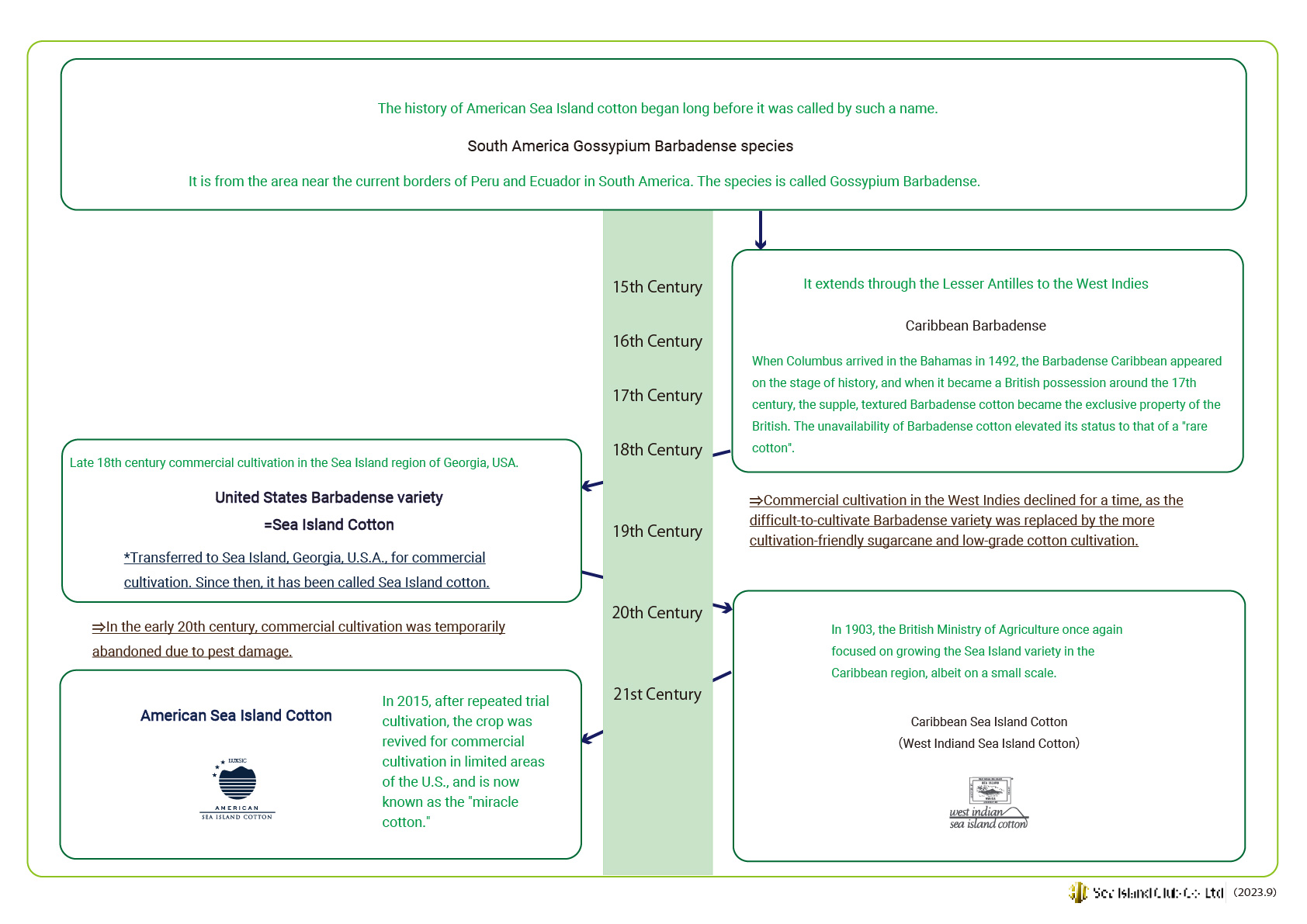
It subsequently spread through the Lesser Antilles to the West Indies, where it was first encountered by Europeans upon Columbus's arrival in the Bahamas in 1492. Following the British advance in the 17th century, the cultivation of cotton flourished, and the Barbadense variety of cotton, renowned for its soft texture, remained a dominant force in British production. The Barbadense variety of cotton, which was difficult to obtain, established itself as a rare and mysterious commodity.
However, during the islands' turbulent history, the Barbadense, which was difficult to cultivate, was replaced by sugarcane and low-grade cotton, which were easier to grow. As a result, commercial cultivation of the Barbadense in the West Indies declined for a time.
Instead, from the late 18th century onwards, cultivation began to flourish in the Sea Islands region of Georgia in the United States. The Barbadense variety grown in this region also continued to be a source of interest, and it came to be known as Sea Island cotton. However, in the early 20th century, commercial cultivation of this cotton declined due to pest damage.
The 1980s saw a resurgence of interest in commercial cultivation, with the first new plantations established in New Mexico. A research program in extra-long staple cotton was established at a local state university, laying the groundwork for the revival of Sea Island cotton. We joined this program with seeds from the Caribbean. After more than a decade of trial cultivation, Sea Island cotton is now being grown commercially on U.S. soil for the first time in nearly 100 years.
US COTTON TRUST PROTOCOL
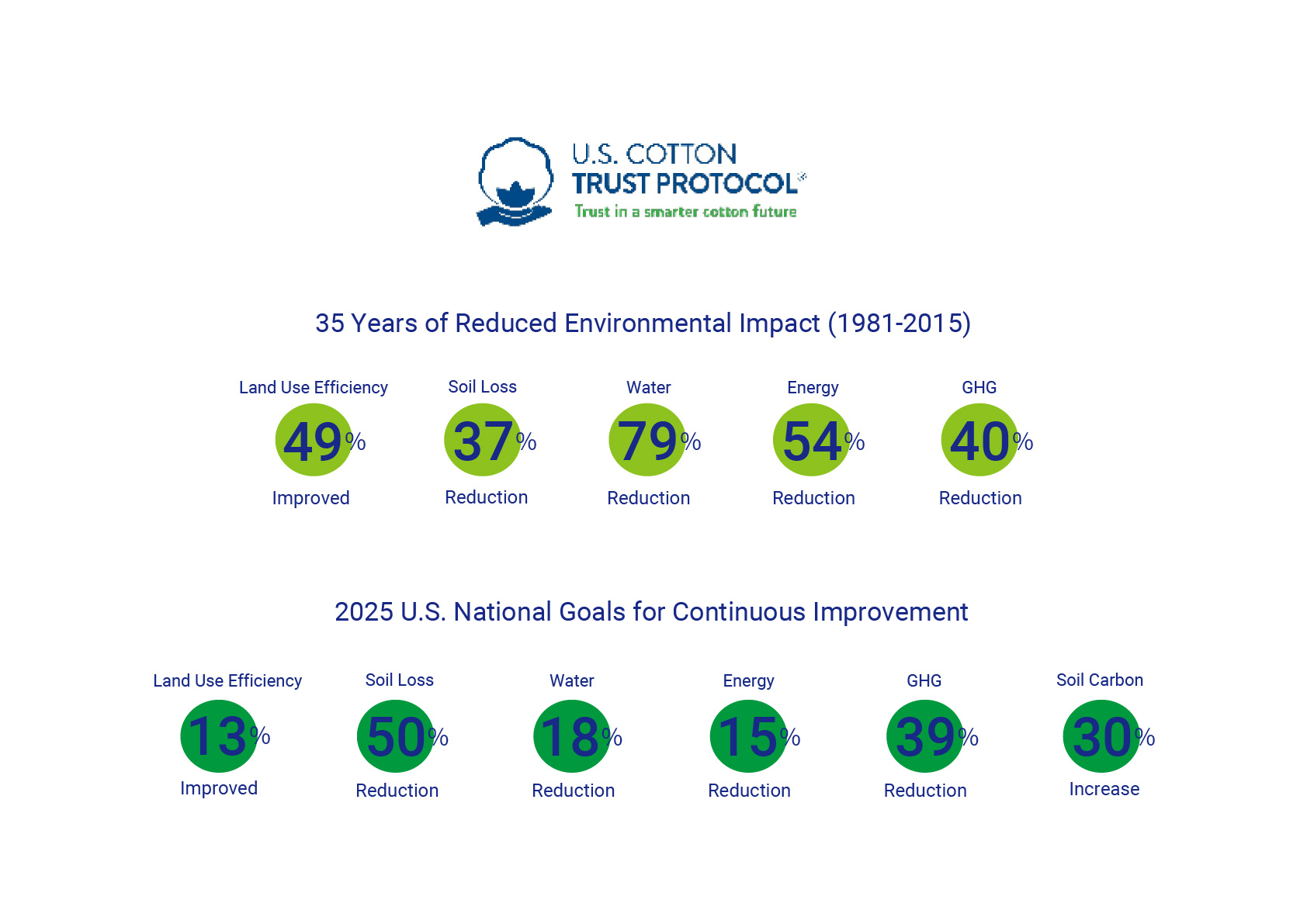
The US COTTON TRUST PROTOCOL is a U.S. cotton sustainability program.
It is the world's inaugural cotton business program to provide comprehensive supply chain transparency, structured around six core sustainability components: water use, energy use, greenhouse gas emissions, soil conservation, soil carbon, and land use. In the 35 years to 2015, cotton production in the U.S. has significantly reduced its environmental impact. This includes a 79% reduction in water use and a 40% reduction in greenhouse gas emissions. Furthermore, the program has established 10-year objectives to reduce water usage by 18% and greenhouse gas emissions by 39% by 2025. American Sea Island Cotton is a sustainable cotton product that is kind to both people and the environment.
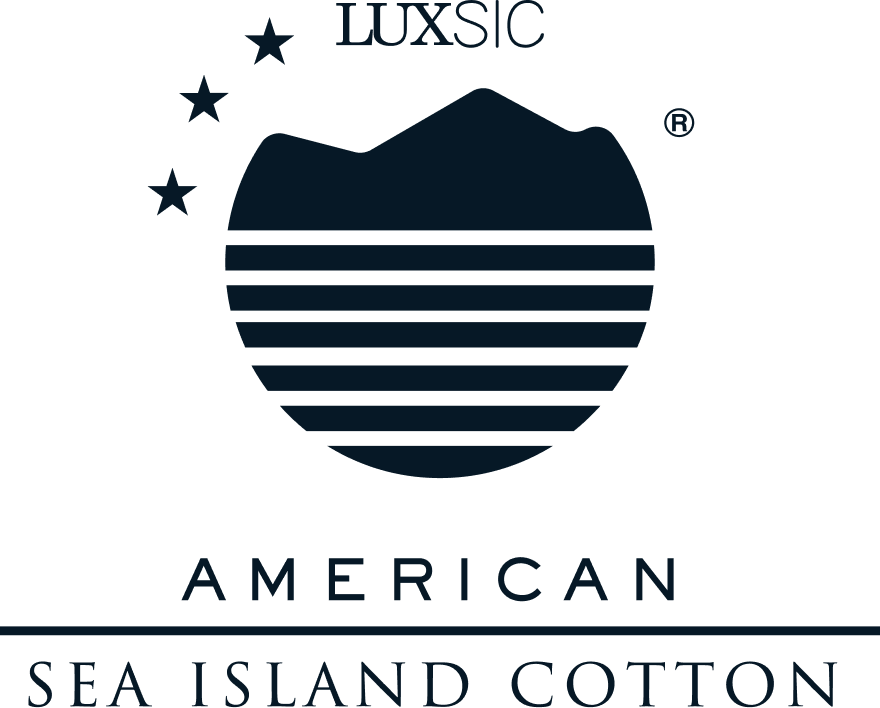
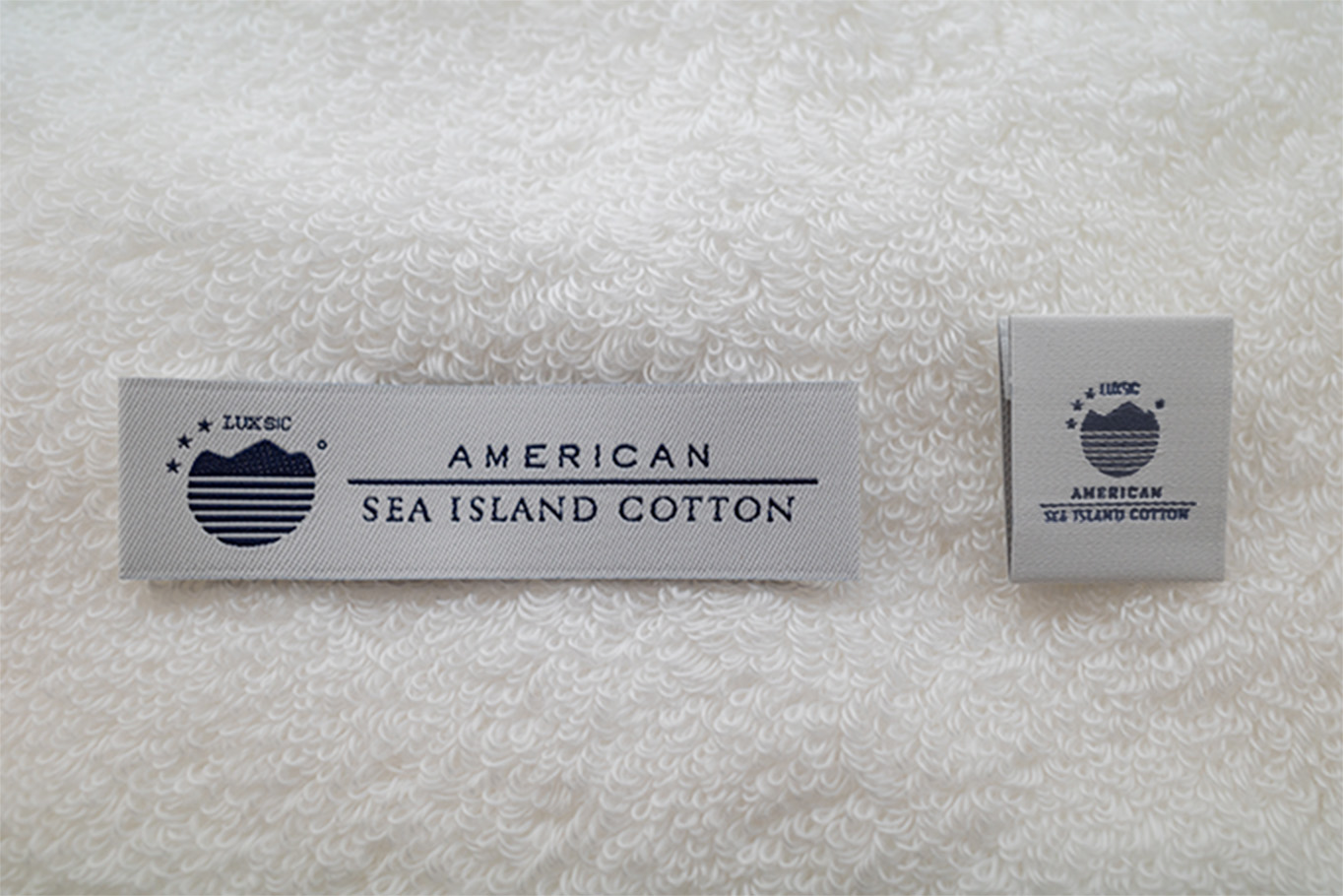
Despite its high altitude, this area enjoys a special desert climate and sunshine hours comparable to those of the Caribbean islands, making it an ideal location for high-quality cotton production. The American Sea Island Cotton logo is based on an image of cotton fields against a clear sky and mountains of the region. The logo is used on holographic tags and woven labels and provides insight into the origins of American Sea Island Cotton.
A cool touch material by American Sea Island Cotton
BIENESTA, it is a yarn for making comfortable materials
There is a reason for the “freshness.”
(As an example, BIENESTA 36/1SZ jersey has a Q-MAX value of 0.268W/㎠, exceeding the industry standard of 0.20W/㎠. (According to Kaken Test Center)
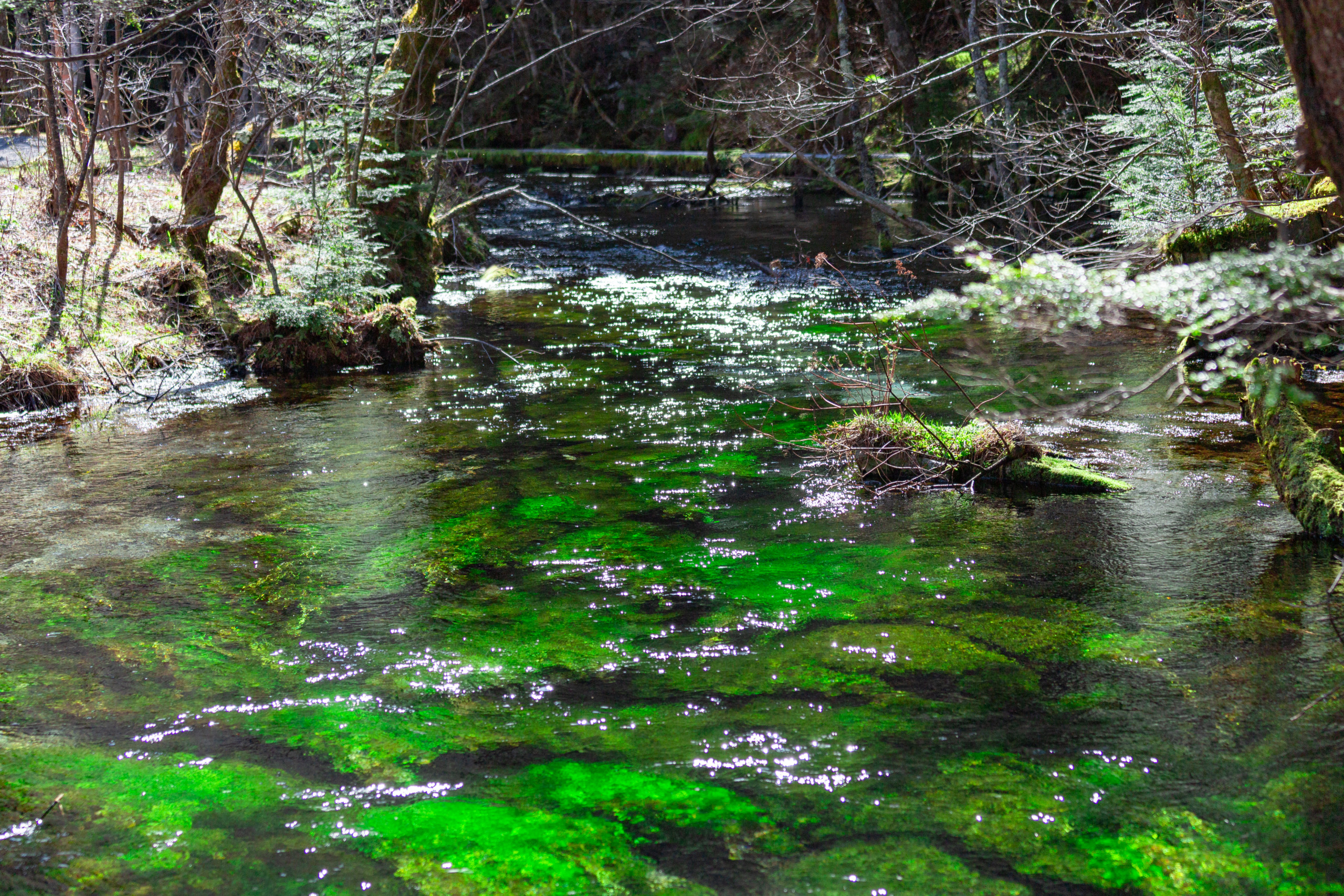
Natural functional material of 100% cotton
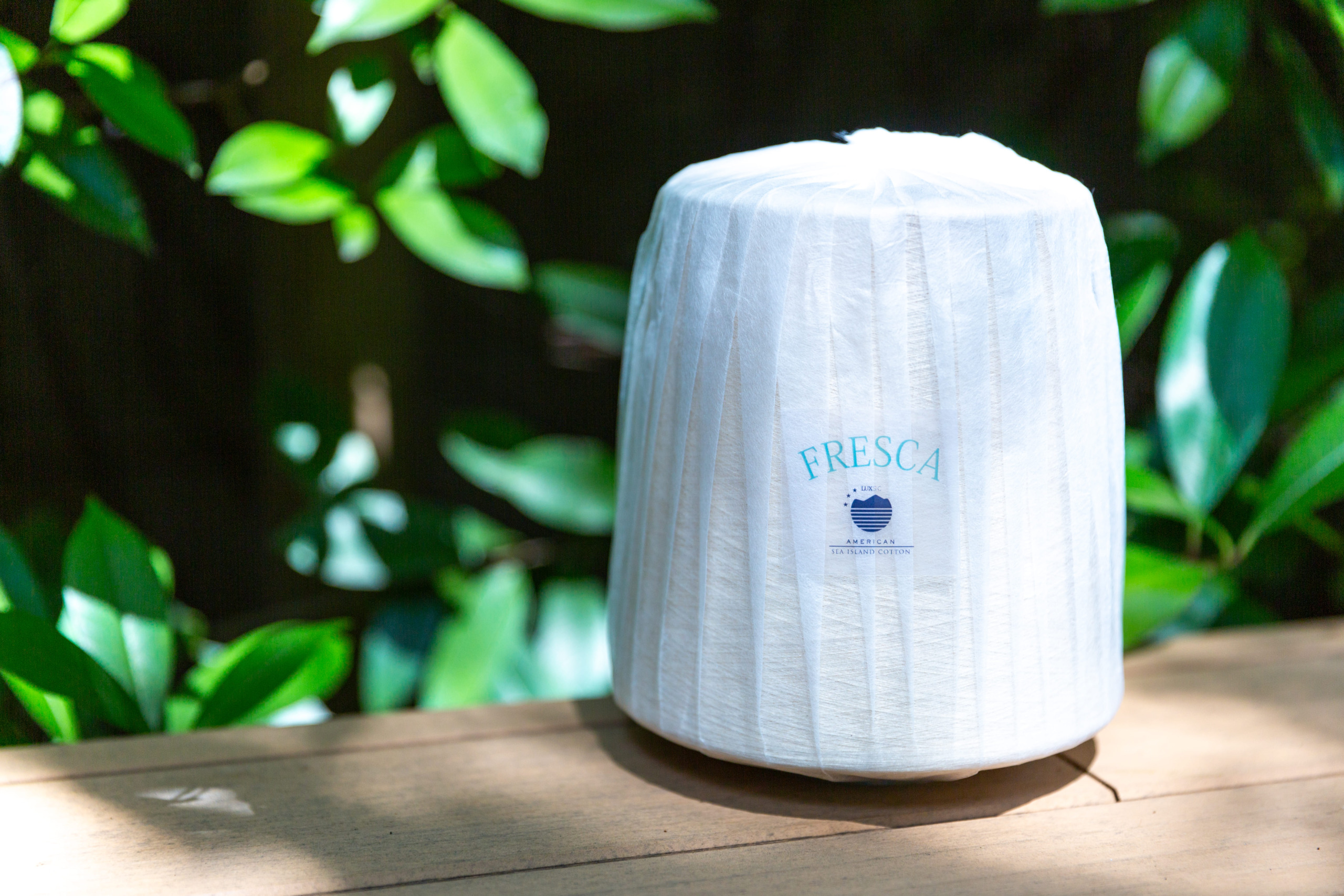
There are two types of BIENESTA yarn available: 36/1S and 36/1Z.

